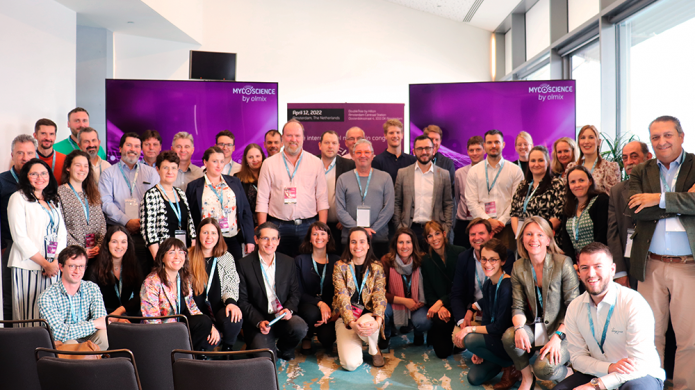News
Olmix Myco’Science: the latest scientific research on mycotoxin risk management
Read our one-page summary on the Myco'Science international congress!
Held in Amsterdam on the 12th April and live streamed to the Olmix’s customers and partners all around the world, the congress counted on the presence of some of the most renowned scientists through two dynamic technical sessions, “From field to feed” and “From feed to animals”.
From field to feed: Mycotoxin development, occurrence and detection
Professor Paola Battilani, from Unicatt (Italy), described the different factors affecting mycotoxins development, profile of contamination and co-occurence in crops with an important emphasis on the changing climate conditions. That is why mycotoxin analysis and screening are becoming a key tool to evaluate the risk of mycotoxins, with several and innovative options available in the industry that were presented by Dr. Alix Pierron (ENVT, France). To better understand mycotoxin occurence, Msc. Margriet Faber, Olmix For Feed Project Manager, took the lead and shared the details of the Olmix’ Myco’screen survey program that Olmix has conducted in partnership with Labocea (France) and that illustrated the importance of polycontamination in feed materials. In line with the importance of mycotoxin analysis and new emerging innovative methods, it was then Dr. Adriano Mallmann’s (Pegasus Science, Brazil) turn to highlight the promising perspectives of NIR spectroscopy to speed up in-house raw material screening in feed mills.
From feed to animals: The impact of mycotoxins in animals
Professor Isabelle Oswald (INRAe, France) a major contributor in the understanding of mycotoxin impact on gut health, illustrated the disruptive effect of mycotoxins, especially DON, on gut morphology, intestinal barrier function, with specific highlights in tight junctions, TEER and vaccine response. New findings on the transfer of mycotoxins to animals were shown afterwards. Pr. Philippe Guerre (ENVT, France), presented the first study ever demonstrating an accumulation of fumonisins in broiler tissue over time. The study done by Pr. Guerre also confirms that in the presence of an algoclay-based decontaminant produced by Olmix, this fumonisin accumulation can be significantly reduced. The second case study, presented by Dr Regiane Santos pointed out the possible transmission of ZEN and DON from sows to piglets even at low levels (field levels). This research also demonstrates that in the presence of an algoclay-based decontaminant produced by Olmix, the level of mycotoxin in sows and piglet’s serum was significantly reduced.
Danièle Marzin (Olmix Marketing and Innovation director) finally highlighted the concrete and innovative tools and solutions developed by Olmix to better manage mycotoxin risk.

Speakers of the Myco'Science congress.

Participants of the Myco'Science congress.
